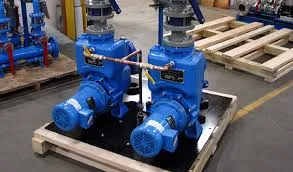English
- Afrikaans
- Albanian
- Amharic
- Arabic
- Armenian
- Azerbaijani
- Basque
- Belarusian
- Bengali
- Bosnian
- Bulgarian
- Catalan
- Cebuano
- Corsican
- Croatian
- Czech
- Danish
- Dutch
- English
- Esperanto
- Estonian
- Finnish
- French
- Frisian
- Galician
- Georgian
- German
- Greek
- Gujarati
- Haitian Creole
- hausa
- hawaiian
- Hebrew
- Hindi
- Miao
- Hungarian
- Icelandic
- igbo
- Indonesian
- irish
- Italian
- Japanese
- Javanese
- Kannada
- kazakh
- Khmer
- Rwandese
- Korean
- Kurdish
- Kyrgyz
- Lao
- Latin
- Latvian
- Lithuanian
- Luxembourgish
- Macedonian
- Malgashi
- Malay
- Malayalam
- Maltese
- Maori
- Marathi
- Mongolian
- Myanmar
- Nepali
- Norwegian
- Norwegian
- Occitan
- Pashto
- Persian
- Polish
- Portuguese
- Punjabi
- Romanian
- Russian
- Samoan
- Scottish Gaelic
- Serbian
- Sesotho
- Shona
- Sindhi
- Sinhala
- Slovak
- Slovenian
- Somali
- Spanish
- Sundanese
- Swahili
- Swedish
- Tagalog
- Tajik
- Tamil
- Tatar
- Telugu
- Thai
- Turkish
- Turkmen
- Ukrainian
- Urdu
- Uighur
- Uzbek
- Vietnamese
- Welsh
- Bantu
- Yiddish
- Yoruba
- Zulu
Telephone: +86 13120555503
Email: frank@cypump.com
Nov . 01, 2024 09:24 Back to list
Understanding Sewage Ejectors for Effective Wastewater Management Solutions
Understanding Sewage Ejectors Essential Components for Effective Waste Management
Sewage ejectors play a pivotal role in modern waste management systems, particularly in residential and commercial settings where gravity drainage is not feasible. These devices are essential for transporting wastewater, including sewage and greywater, from lower elevation areas to higher ones, enabling efficient disposal and treatment.
At its core, a sewage ejector consists of a basin, a pump, and a control mechanism. The basin, often referred to as a sump, collects wastewater that flows into it from fixtures such as sinks, toilets, or washing machines. When the water level in the basin reaches a certain point, the pump is activated. It then ejects the accumulated wastewater through a discharge pipe, usually configured to transport it to the main sewer line or a septic system situated at a higher elevation.
One of the primary advantages of sewage ejectors is their ability to function in basements and lower-level bathrooms where conventional gravity drainage is insufficient
. This is particularly important in regions with a high water table or in homes built in low-lying areas. Furthermore, the compact size of ejector systems makes them a practical choice for space-constrained installations, allowing property owners to utilize all areas of their homes without facing drainage challenges.sewage ejector

However, it is crucial to ensure that sewage ejectors are installed and maintained correctly. Regular inspections can prevent potential failures that could lead to sewage backups, which pose significant health risks and require costly repairs. It's advisable for homeowners to be aware of the signs of a failing ejector, such as unusual noises, slow drainage, or unpleasant odors, as these could indicate that the system needs attention.
Choosing the right sewage ejector involves considering the specific requirements of the property, including the volume of wastewater produced and the height to which it needs to be pumped. Various models are available, each designed to meet different capacities and lift requirements, making it essential to consult with a professional plumber to select the most suitable option.
In conclusion, sewage ejectors are critical components of waste management systems that enhance the functionality of homes and businesses. By understanding how they work and recognizing the importance of maintenance, property owners can ensure a reliable sewage disposal system, safeguarding both their property and public health.
-
ISG Series Vertical Pipeline Pump - Chi Yuan Pumps Co., LTD.|High Efficiency, Energy Saving, Low Noise
NewsJul.30,2025
-
ISG Series Vertical Pipeline Pump- Chi Yuan Pumps|High Efficiency&Low Noise
NewsJul.30,2025
-
ISG Series Vertical Pipeline Pump-Chi Yuan Pumps Co., LTD.|High Efficiency&Energy Conservation
NewsJul.30,2025
-
ISG Series Vertical Pipeline Pump - Chi Yuan Pumps Co., LTD.|Advanced Hydraulic Design&Energy-Efficient Solutions
NewsJul.30,2025
-
ISG Series Vertical Pipeline Pump - Chi Yuan Pumps Co., LTD.
NewsJul.30,2025
-
ISG Series Vertical Pipeline Pump - Chi Yuan Pumps Co., LTD.|energy-efficient fluid handling&industrial durability
NewsJul.30,2025










